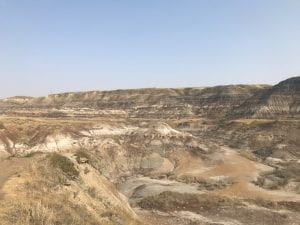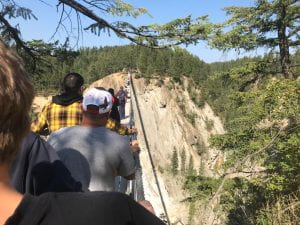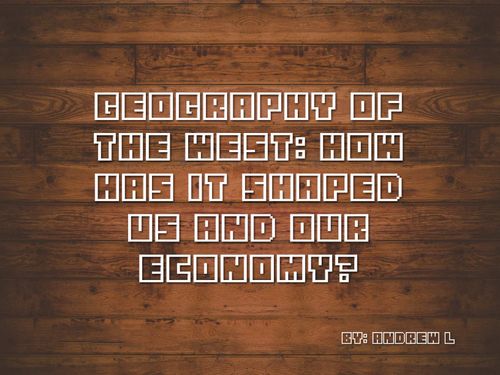Hi everyone! Today in my blog, I will be writing about my latest Humanities project about Geography, and how it shaped the West of Canada.

We went to Alberta on the third day of school to “learn” about the West and its Geography, and have a challenge to visit every single tourist trap in Alberta…
For this project, we did 3 keystones that would all be in our final product, which was an eBook that showed what we did on our trip to Alberta. In each section of our book, we had to show that place we went to, what we did there, and why it connects to the shaping of the west involving geography?
We made a comic book that described the 5 themes of geography, which are human-environment interaction, movement, place, regions, and location.

There were some places we went to like the Golden Skybridge that I do not believe helped shape the west, as it was built in May of 2021. It is a tourist trap, with a Skybridge that is the tallest in Canada. That’s about it…

Some places though, like Cave and Basin (Banff hot springs) and Pioneer Village in the Sundre Museum, I think were very influential in the shaping of the West. The original Canadian Pacific Railway went through there, and many hotels were built as well to accommodate all of the rich tourists that wanted to explore the “great wilderness of the west”.

Ms. Willemse, our main teacher for this project, said that other people should want to read our “multitouch(?)” eBook, but I don’t know why literally anyone would want to read about a teenager who went to Alberta and saw all of the tourist traps there, like the Golden Skybridge, or the Pipe Mountain Coaster in Revelstoke, or Banff in general.
My answer to the driving question:
The geography of the West is very unique, as it varies constantly. At one moment you might be in a beautiful old growth forest next to a clear creek running into the ocean, and the next you might be in a wide plains area with grass flowing in the wind next to to a tall and imposing mountain. BC has always has variables, and so has its economy. The First Nations people would trade their goods that they had from their area with another group with other items that the first group didn’t have. Geography even played a big role when the Europeans came, because they had to survive on what they had, and some parts of the geography were harder to pass and survive on than others, and they had to sometimes trade with First Nations people to live. There are a lot of dinosaurs in Alberta because it suited the dinosaur’s preferred geography the best. We find a lot of dinosaurs there today because of the geography of the badlands, and that brings tourism and money from selling the bones. Alberta’s main source of income is from oil, which is made from dinosaurs that have decomposed in the earth.
Thank you for listening to my blog post, and I will see you in the next one!
